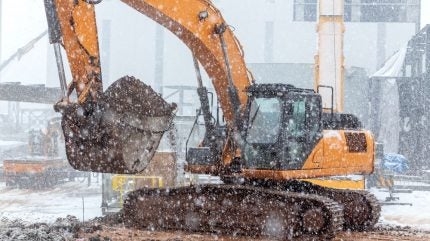Support CleanTechnica’s work through a Substack subscription or on Stripe.
If you’re going to force a leading global energy infrastructure developer to halt work on an offshore wind project that is already 80% percent complete, you better have a good reason in your hip pocket, ready to pull out at a moment’s notice. Or not, as the case may be. When the Trump administration brought the Revolution Wind project to a screeching halt last week, they offered up a pathetically thin excuse that practically sits up and begs for further investigation.
What’s The Best Excuse Ever For Stopping Work On An Offshore Wind Farm?
Mystery has been swirling around the stop-work order ever since Friday, August 22, when Matthew Giacona, the Acting Director of the Bureau of Ocean Energy Management at the US Department of the Interior, issued a letter telling the Danish firm Ørsted to “halt all ongoing activities related to the Revolution Wind Project on the outer continental shelf (OCS)” while the his office addresses “concerns that have arisen during the review that the Department is taken pursuant to the President’s Memorandum of January 20, 2025.”
As for why those concerns were not addressed when the Revolution Wind site was first identified as appropriate for offshore wind development, that’s a good question. BOEM is the federal agency tasked with defining offshore wind areas for lease to developers. The process involves assessing both environmental and national security concerns as well as issues related to tourism, fishing, shipping, and other competing interests, before the perimeter of a lease area is established. The Revolution Wind site is located off the busy coasts of Rhode Island and Massachusetts, and the equally busy Atlantic seaboard state of Connecticut is also involved as a partner in the project, making the task a particularly complex one.
After reviewing all of this and more, BOEM issued the offshore lease for the area that hosts Revolution Wind a dozen years ago, all the way back in 2013.
Nevertheless, Giacona raised the idea that national security issues have suddenly popped up like mushrooms after a rain. “In particular, BOEM is seeking to address concerns related to the protection of national security interests of the United States and prevention of interference with reasonable uses of the exclusive economic zone, the high seas, and the territorial seas,” Giacona emphasized.
It will be interesting to see what specific national security concerns Giacona has been looking at. In particular, it will be interesting to see if similar concerns have arisen regarding the Coastal Virginia Offshore Wind project, which is also currently under construction. After all, Virginia hosts Naval Station Norfolk, the largest military facility of its kind in the world, and CVOW is billed as the largest offshore wind farm in the US, so wouldn’t BOEM want to take a look over there, too?
Offshore Wind Versus Natural Gas Pipelines
On second thought, naw. Why would the Trump administration want to embarrass Virginia’s Republican Governor, Glenn Youngkin, who has championed the CVOW project, especially when the ripe targets of Democratic-governed states like Rhode Island and Connecticut are available?
Political expediency aside, speculation will abound in all directions until Interior demystifies the mysterious national security concerns.
One direction is indicated by the involvement of a new gas pipeline proposal, considering what happened after the Interior Department issued a stop-work order against Equinor’s Empire Wind project in New York earlier this year. Interior reversed the order shortly after New York Governor Kathy Hochul reportedly pledged not to gum up the works if and when (spoiler alert: when) the formerly mothballed Constitution natural gas pipleline proposal was taken out of the closet for an airing in New York State.
Similarly, right after the November election results rolled in last fall, the Canadian firm Enbridge announced its intention to move forward with Project Maple, a major expansion of its existing pipeline network from gas fields in Pennsylvania to points east, including Rhode Island and Connecticut among other states.
Keep an eye on next steps for Connecticut Governor Ned Lamont and Rhode Island Governor Daniel McKee, both of whom have come out swinging against the stop-work order. Aside from the loss of clean kilowatts, a permanent halt to the Revolution Wind project would impact hundreds of portside jobs in Rhode Island and thousands more across Ørsted’s 40-state supply chain in the US.
Offshore Wind Projects & National Security
The pipeline connection crossed the CleanTechnica radar over the weekend, and Canary Media reporter Clare Flessler added some detail to the national security issue on August 24, citing a former Massachusetts official who participated in BOEM’s offshore wind area site selection process from 2009 to 2015. The official affirmed that military representatives were represented and closely consulted during the process. “There were no major military issues that came to the fore in New England,” the official told Canary Media.
As recently as April of 2023, Flessler notes, the Pentagon raised concerns over offshore wind development farther to the south, along the coast Virginia as well as Maryland and North Carolina, too. “But the Pentagon has not raised those kinds of high-level concerns over Revolution Wind — or any of the projects being built in New England’s waters,” Flessner reported.
Nobody Expects…Denmark…Or California!
So, what new national security issue suddenly creeped out of the woodwork between between 2023 and 2025? Hmmm…well, lots of things. For one thing, In 2025 the US government began expressing an interest in annexing Greenland, which is a self-governing territory under the Kingdom of Denmark. That calls Ørsted into play, because Ørsted is a publicly listed state-owned enterprise with the Kingdom of Denmark controlling a 50.1% majority stake.
US President Donald Trump, who relentlessly promotes himself as the best dealmaker in the world, has so far failed to pressure Danish authorities into budging on the Greenland issue, so perhaps putting the squeeze on Ørsted will help move matters along.
If so, that might not sit too well with members of the Danish Parliament, who approved a new defense agreement with the US covering the use of military bases in Karup, Skrydrup, and Aalborg. The agreement was signed in 2o23 but not finalized until Parliament voted to approve it in June, by a margin of 94-11.
Coincidentally or not, California Governor Gavin Newsom also added fuel to the foreign relations fire last week. On Friday, August 22 — the same day that Giacona halted work on the offshore wind project — Newsome announced a new Memorandum of Understanding between California and Denmark “supporting cooperation on green economy resilience, technology, and innovation.”
“Home to Silicon Valley and the world’s fourth largest economy, California is uniquely positioned to lead the international conversation and help guide the world in the responsible implementation and use of emerging technology,” Newsom’s office wrote, handily clapping back at President Trump’s Soviet-style “American Energy Dominance” policy.
Oh, lordy. Hold on to your hats…
Photo: Work on the Revolution Wind offshore wind project will stop until the US Department of the Interior resolves a mysterious national security concern of one sort or another (courtesy of Ørsted).
Sign up for CleanTechnica’s Weekly Substack for Zach and Scott’s in-depth analyses and high level summaries, sign up for our daily newsletter, and follow us on Google News!

Have a tip for CleanTechnica? Want to advertise? Want to suggest a guest for our CleanTech Talk podcast? Contact us here.
Sign up for our daily newsletter for 15 new cleantech stories a day. Or sign up for our weekly one on top stories of the week if daily is too frequent.
CleanTechnica uses affiliate links. See our policy here.
CleanTechnica’s Comment Policy




